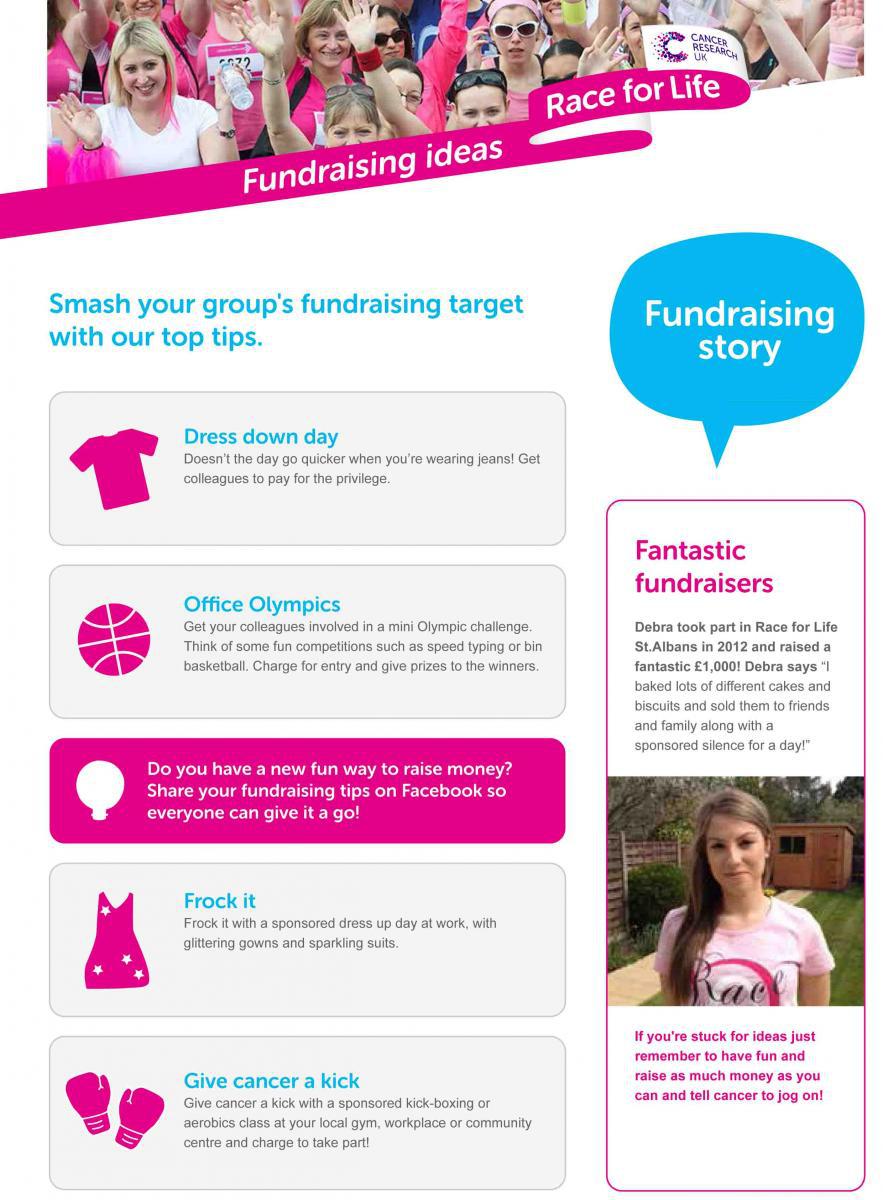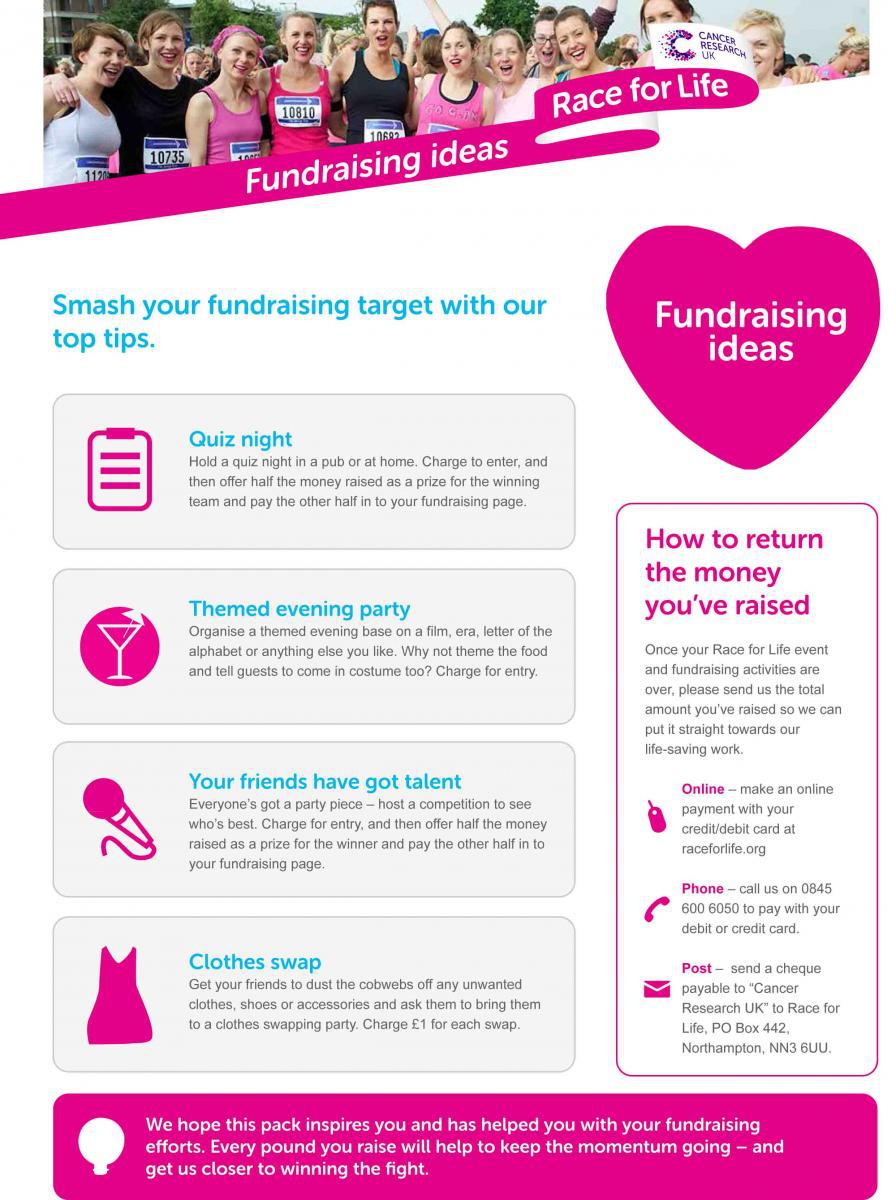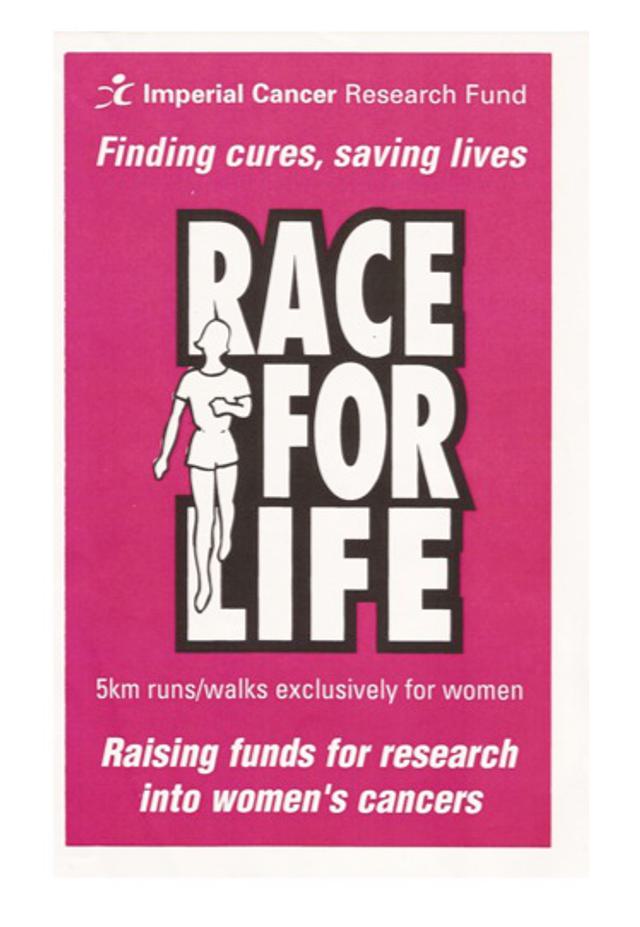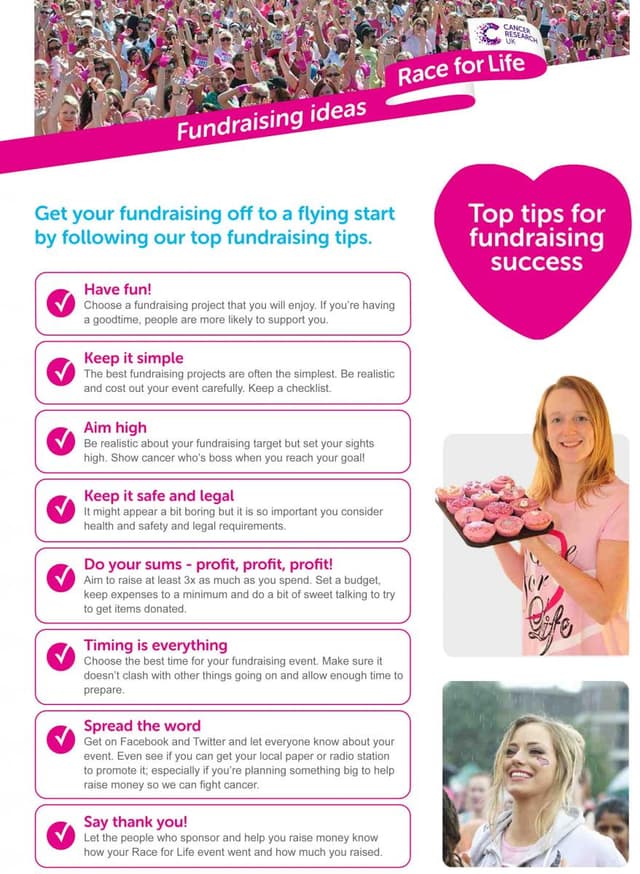Cancer Research UK: the race for life
- Exhibited by
- Paul de Gregorio.
- Added
- June 06, 2013
- Medium of Communication
- Event
- Target Audience
- Awareness, individuals
- Type of Charity
- Healthcare
- Country of Origin
- UK
- Date of first appearance
- 1994
A great idea that puts the oft-repeated ‘it’ll never work here’ firmly in its place. It crossed from the USA to the UK and has continued to evolve and inspire women for many years. Helped by constant innovation they have raised nearly £500 million to beat cancer.
Creator / originator
Imperial Cancer Research Fund/Cancer Research UK.
Summary / objectives
Race for life is a nationwide fundraising event for women only. They walk, jog, or run five kilometres in return for sponsorship to raise funds for Cancer Research UK.
Background
The original ideal came from the American charity Susan G Komen. They held the first ‘race for the cure’ (as it’s known there), in Dallas in 1983.
In the early 1990s, race for the cure inspired an events manager at Imperial Cancer Research Fund (one of two charities that would later merge to form Cancer Research UK) to try something similar. The first ‘race for life’ took place in Battersea Park in 1994; 650 women took part and it raised £35,000. But more importantly it proved that this concept from across the Atlantic could work in the UK. Over the 19 years since, the event has grown massively.
Special characteristics
Race for life has been so successful for so long because innovation is at its heart – it doesn’t stand still. This innovation seeks to make the event as inspiring and supportive for all the women who take part by giving them the opportunity to take their stand against cancer. Examples include:
- Since 1998 particpants wear signs on their backs which are a simple way for them to celebrate the survival of a cancer patient, or commemorate the life of someone they’ve lost to cancer
- In 2001 they introduced the minute’s silence before every event, which creates an emotional and inspiring moment of reflection
Influence / impact
Race for life has created two very big innovations the whole sector has benefited from.
- Online donors raise and return more money than offline donors, so it’s important to get more people to create an online fundraising page when they register. JustGiving and Cancer Research UK have worked hard over years to make this as simple as possible. It’s now seamless. Many charities are also now raising more money as a result of this technology.
- In 2004 there was a small telemarketing test to see if race for life participants would also support with a monthly direct debit donation. They did and at impressive rates. After re-testing the concept it was rolled out. The team formed as a result has been responsible for recruiting over 100,000 new regular givers. Most charities now do something similar – but it was Cancer Research UK who paved the way.
Results
Since the first race for life in Battersea in 1994:
- Six million women have taken part (that’s 19 per cent of the UK female population).
- Over £493 million pounds has been raised.
At its peak in 2009, there were nearly 750,000 participants and still over half a million women take part today.
Merits
Race for life is a true inspiration: six million women have come together to achieve a common goal. Every one of them has a personal story to tell. They are taking part because of their personal connection to the cause, to honour the memory of a loved one they have lost to cancer or to celebrate the life of someone who has survived.
Race for life creates the moment for these women to take action against cancer. Helped by constant innovation they have raised nearly £500 million to beat cancer.
Paul De Gregorio presents Cancer Research UK at SOFII’s IWITOT 2013
Other relevant information



Also in Categories
-
Tags
- Event






















